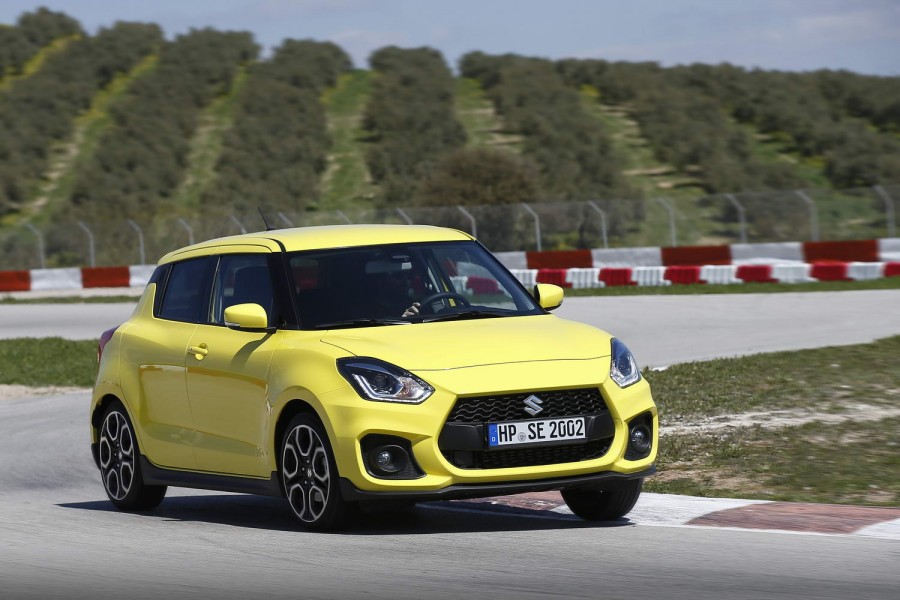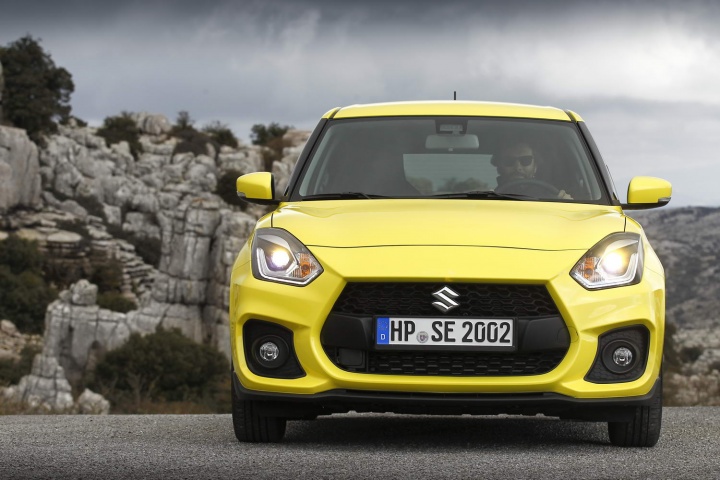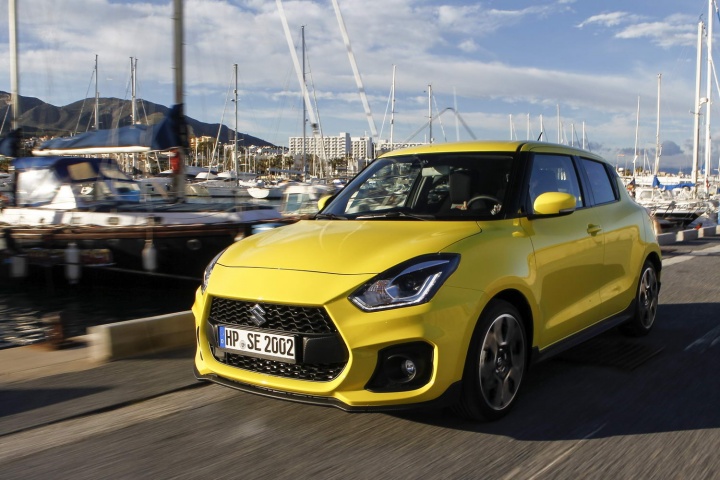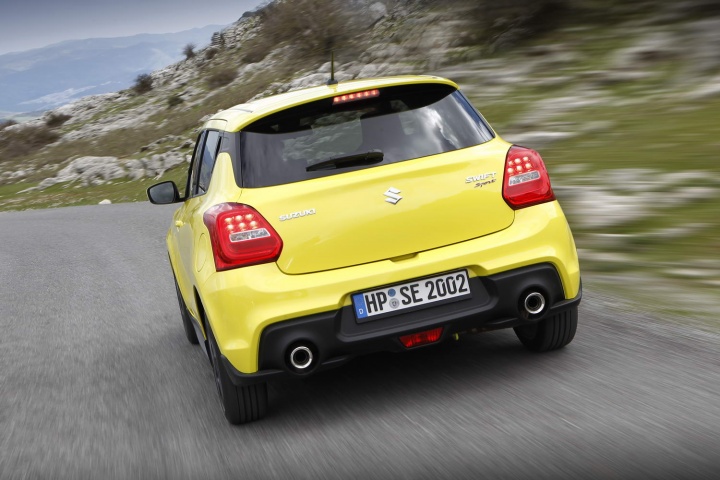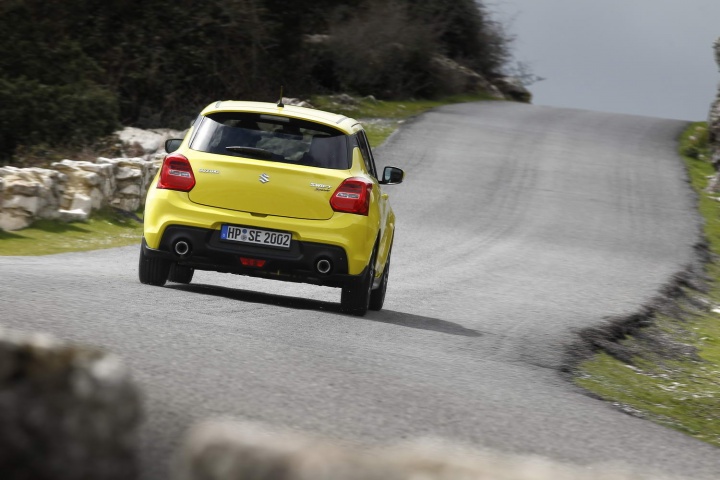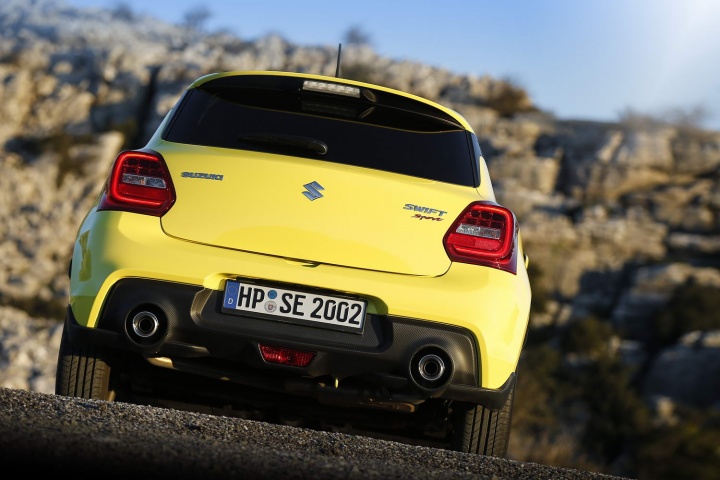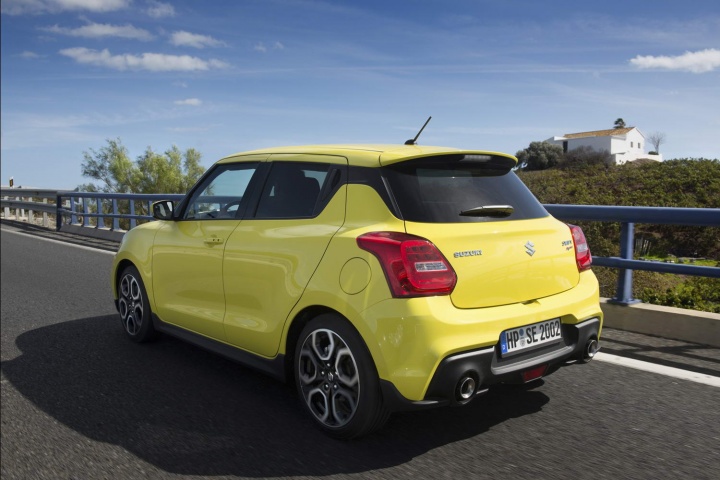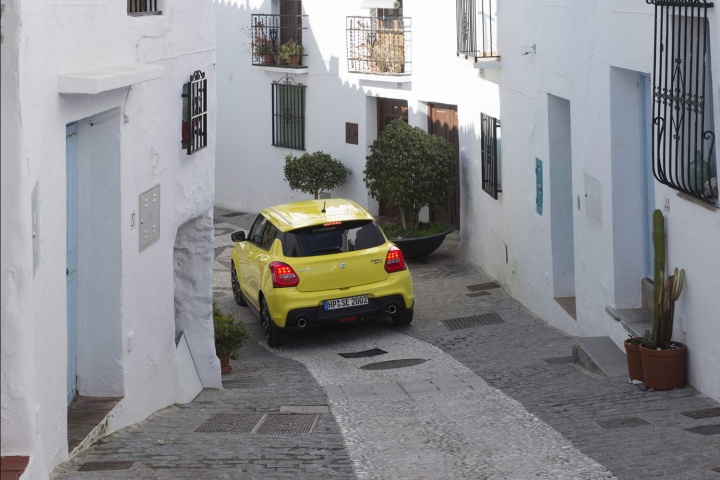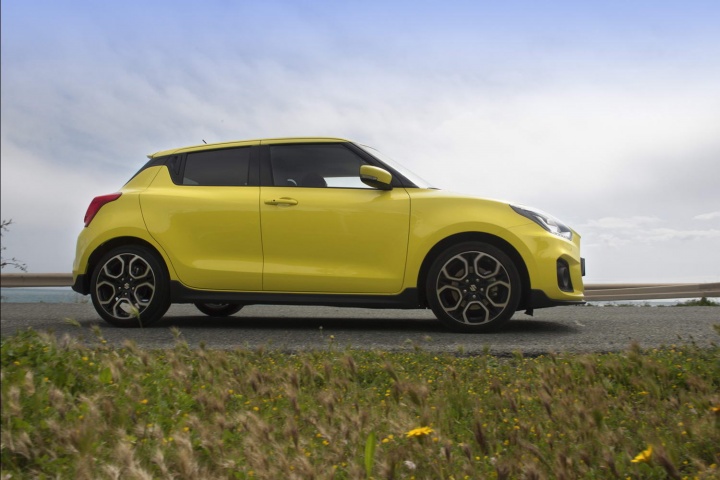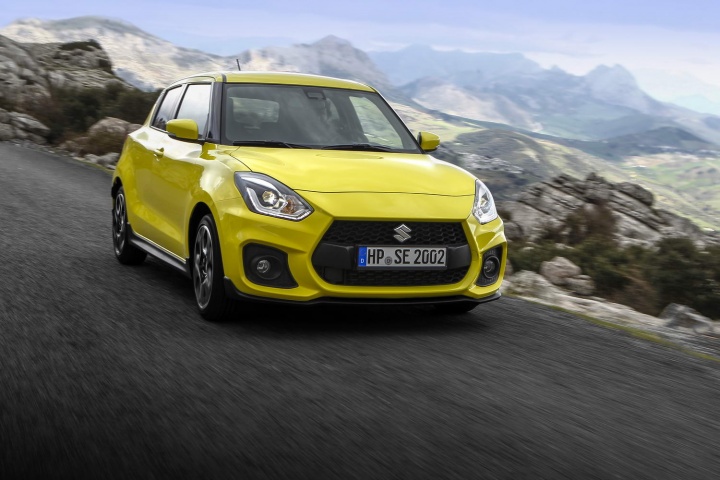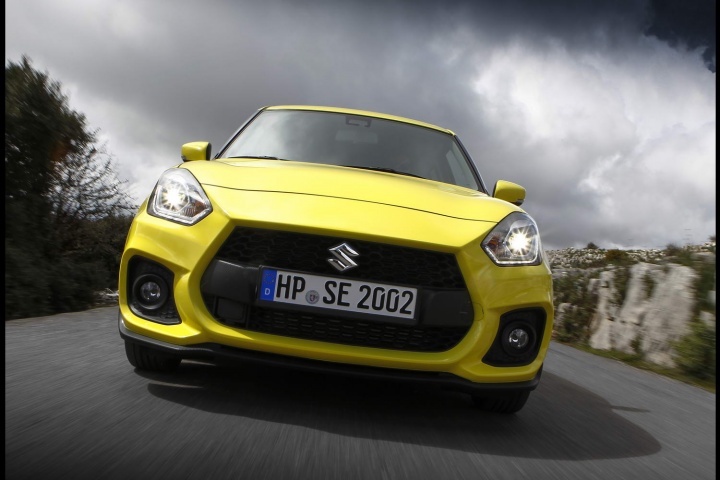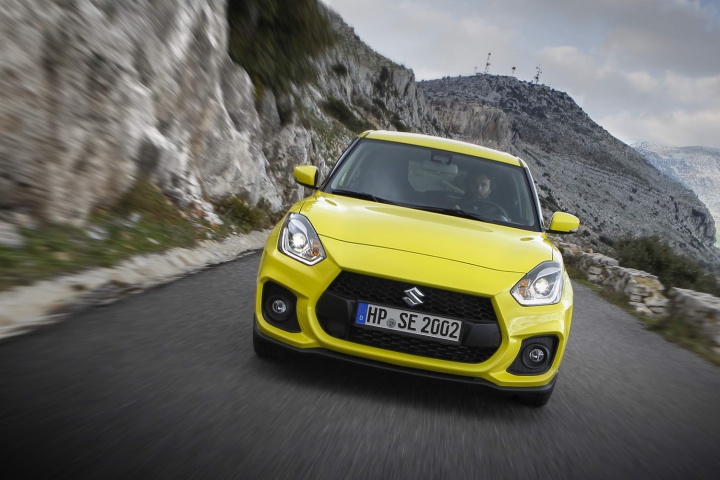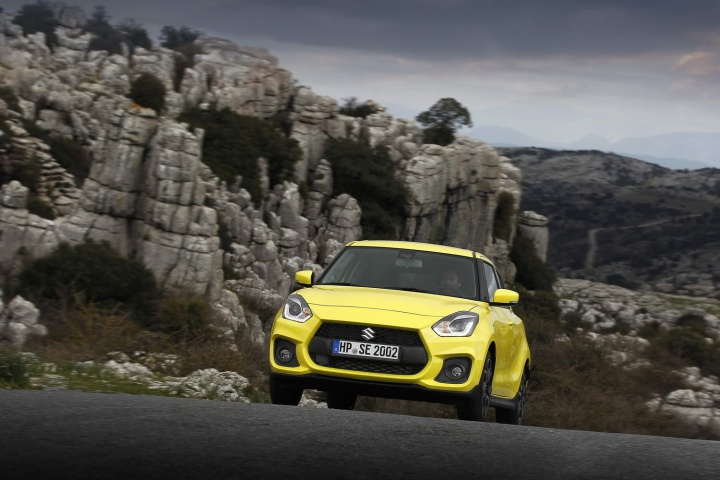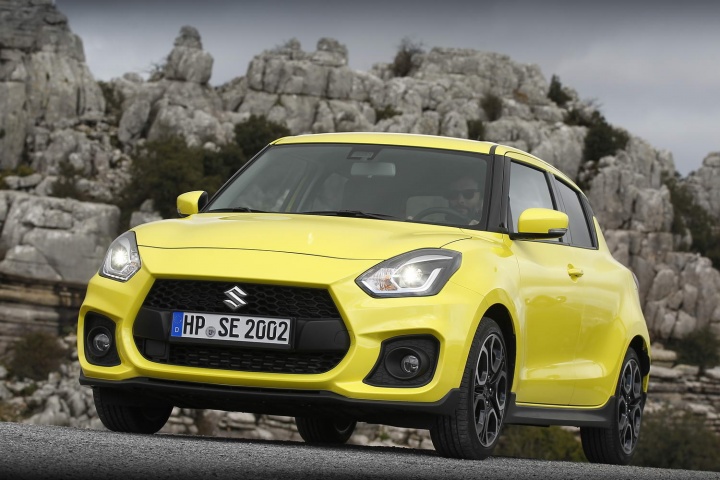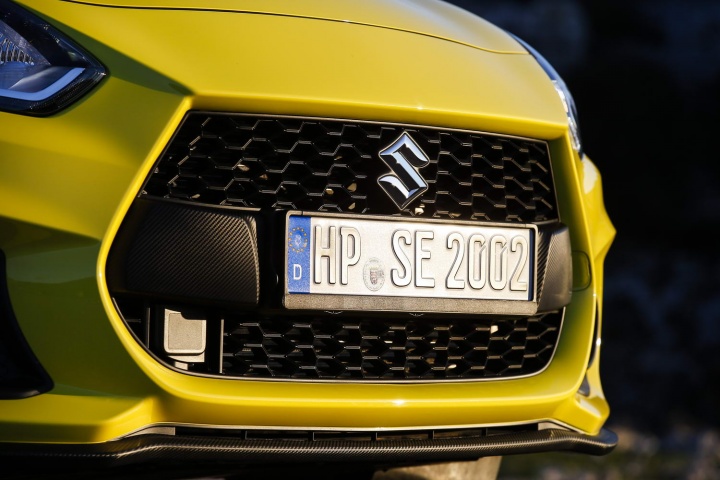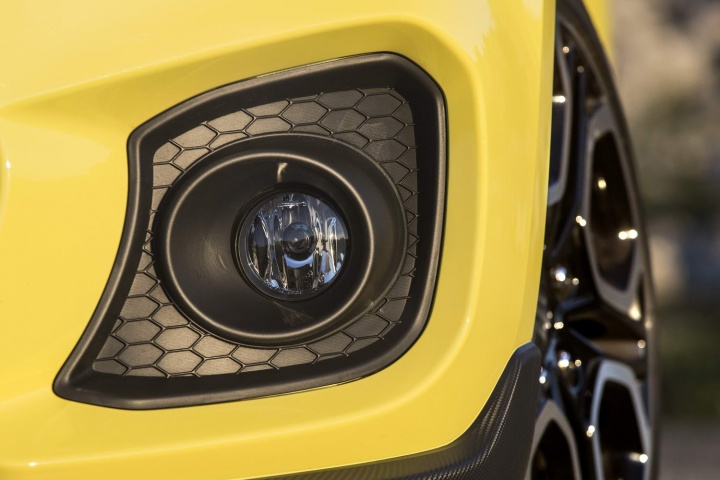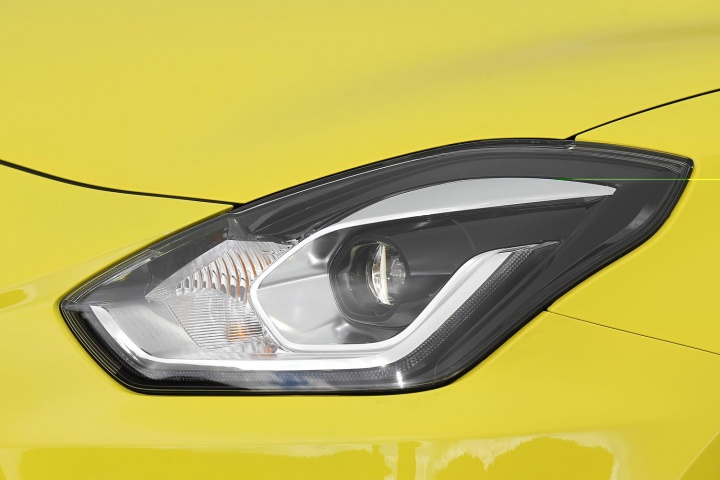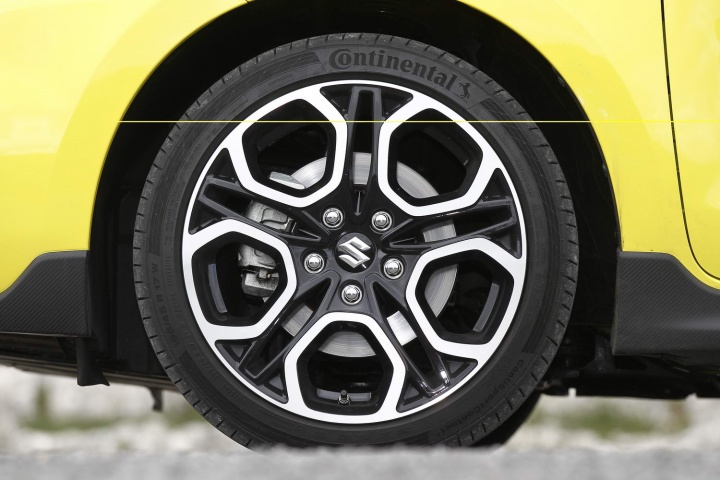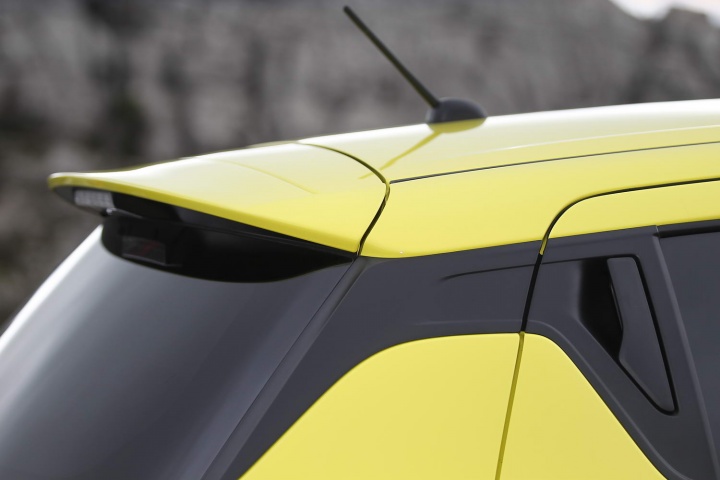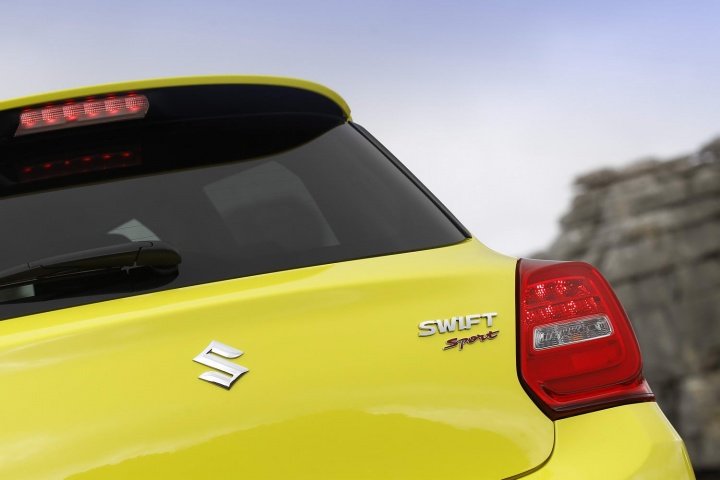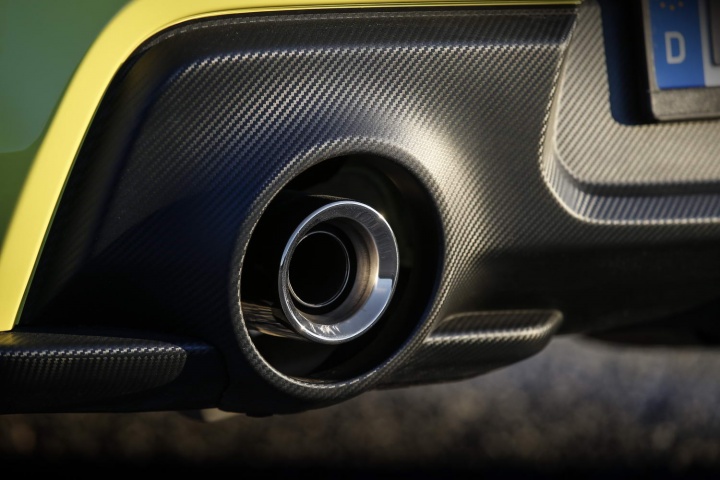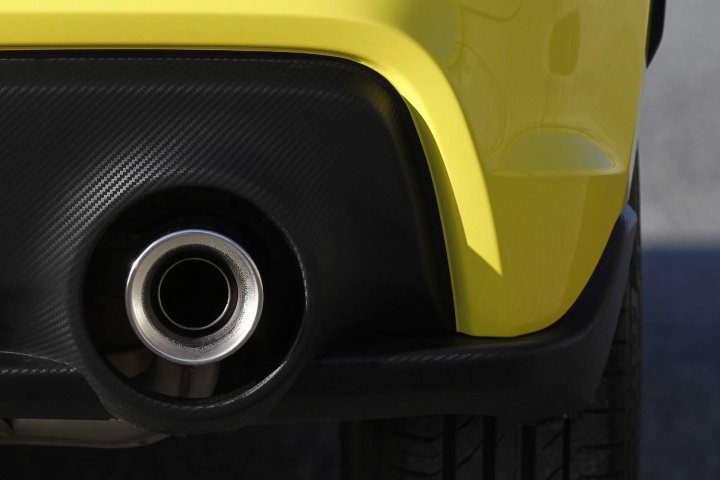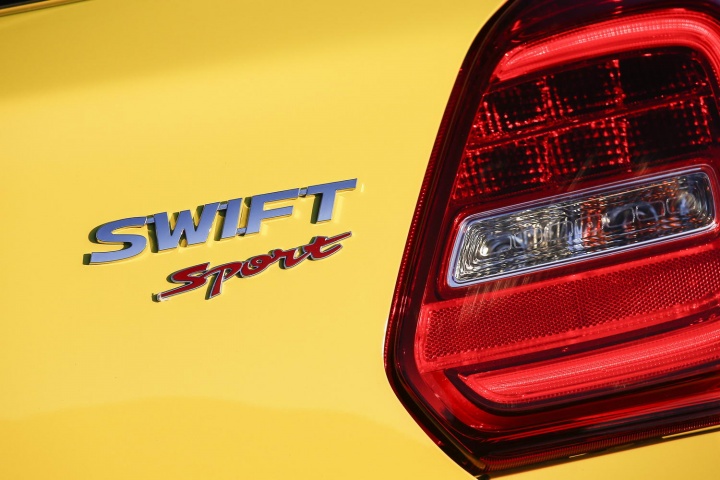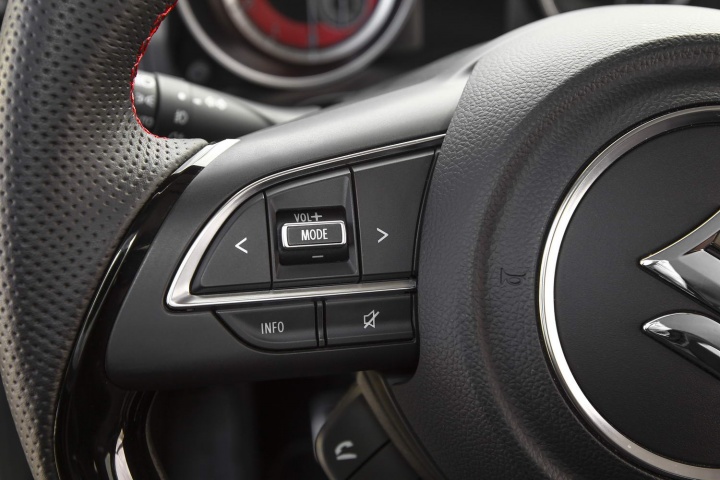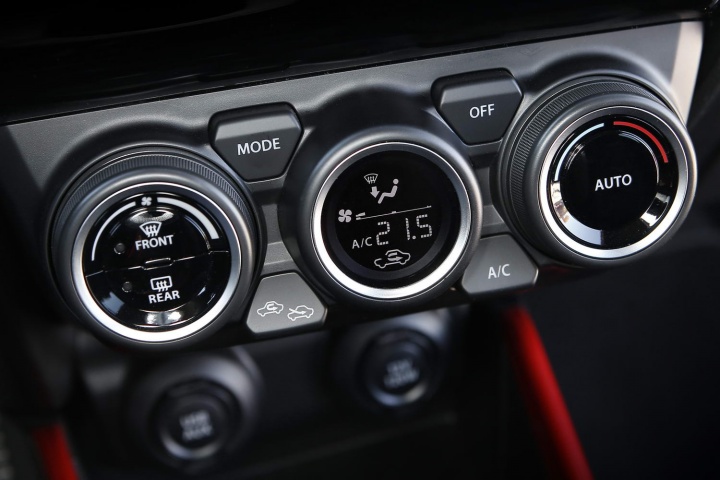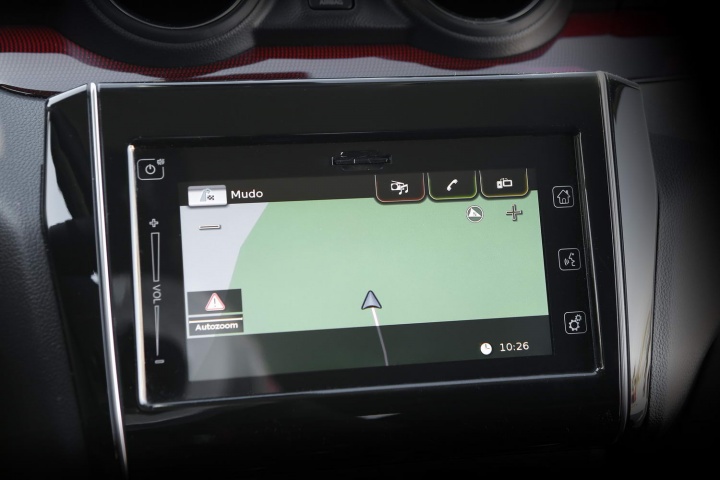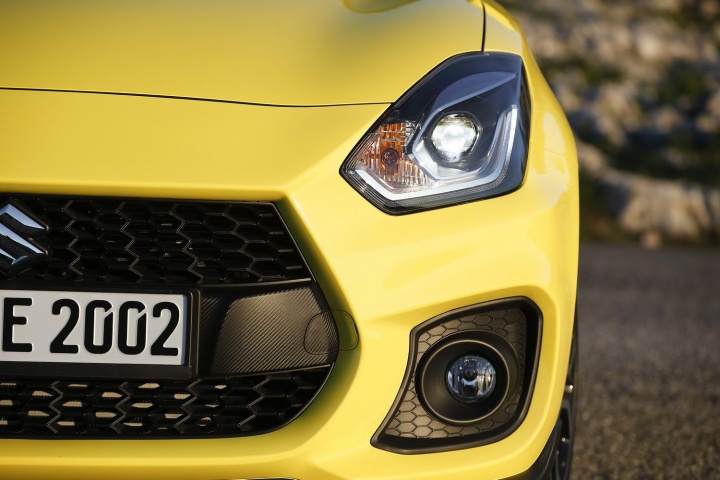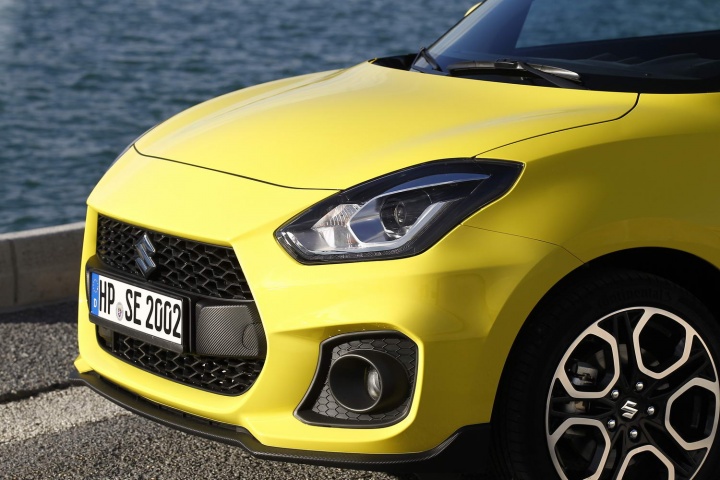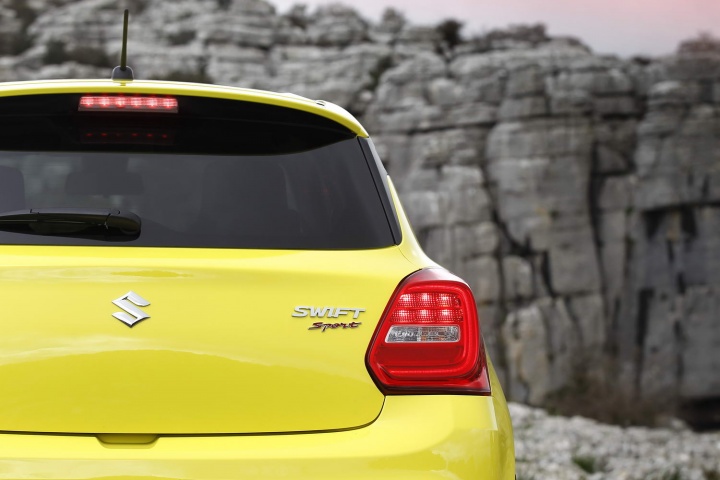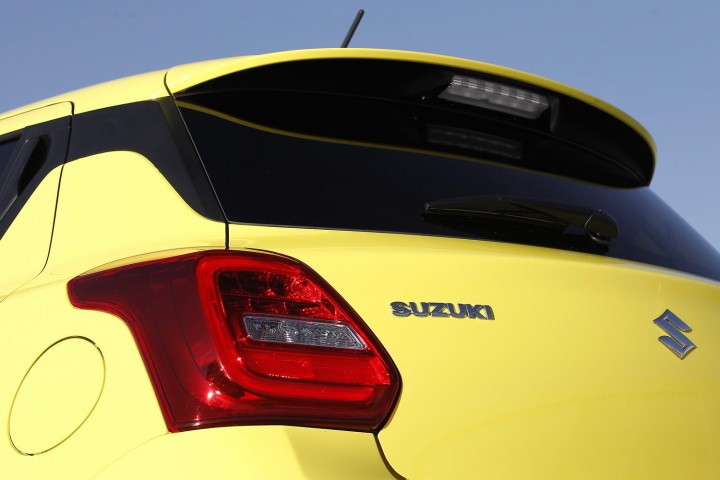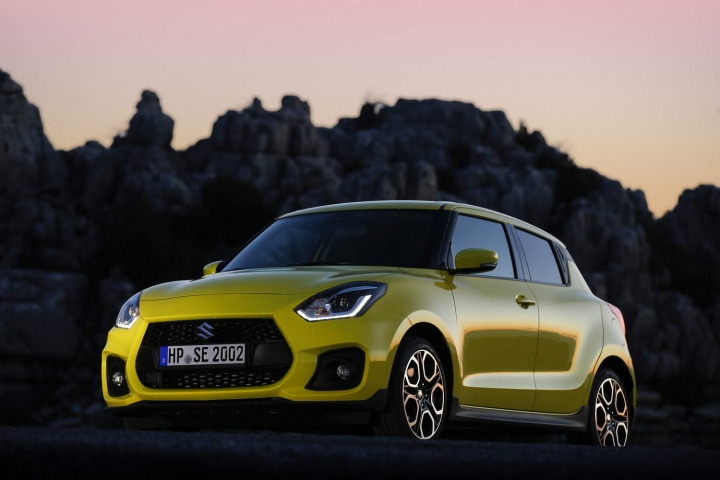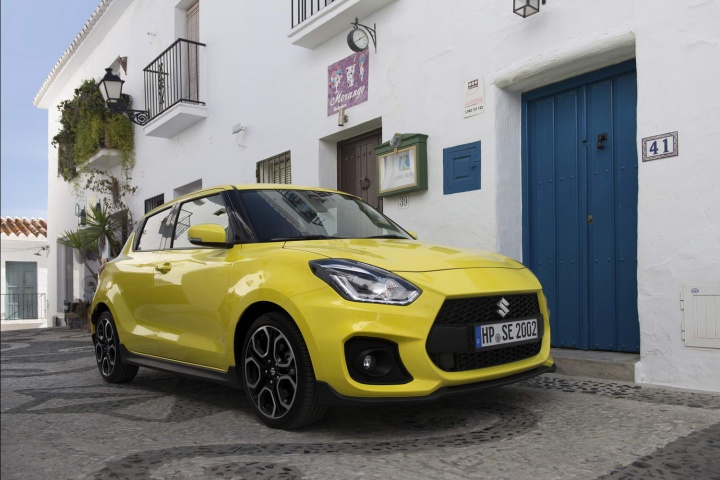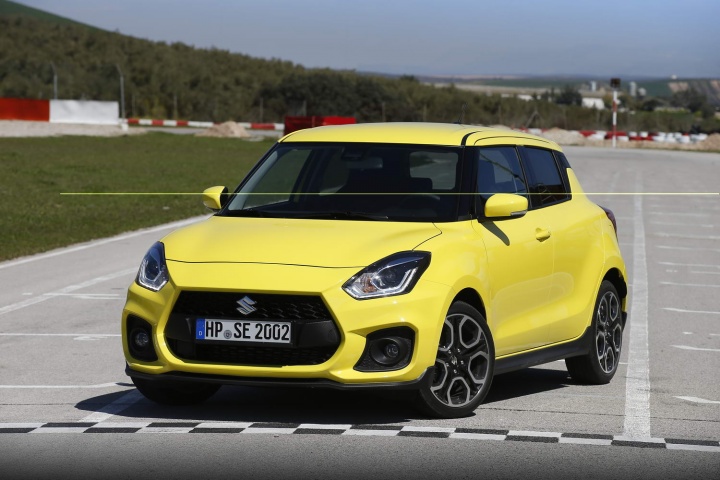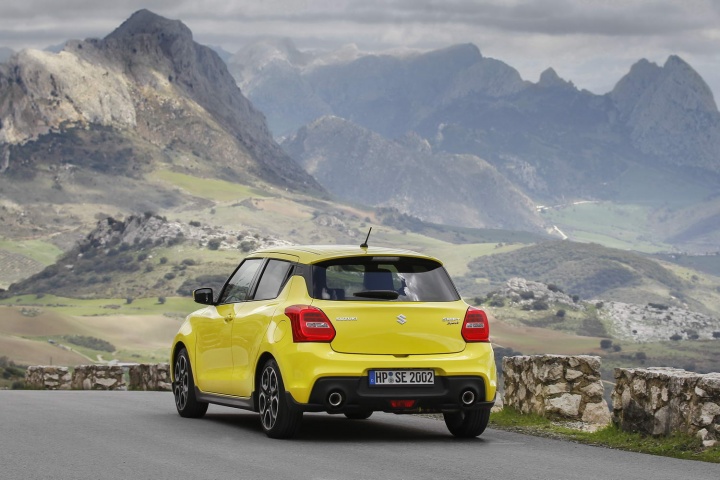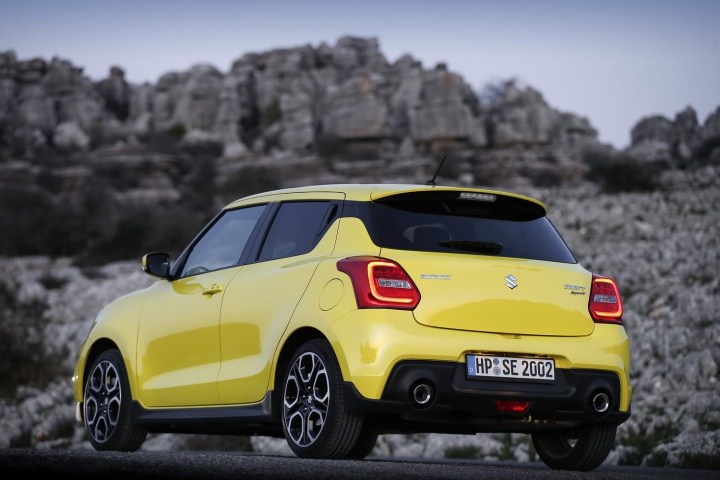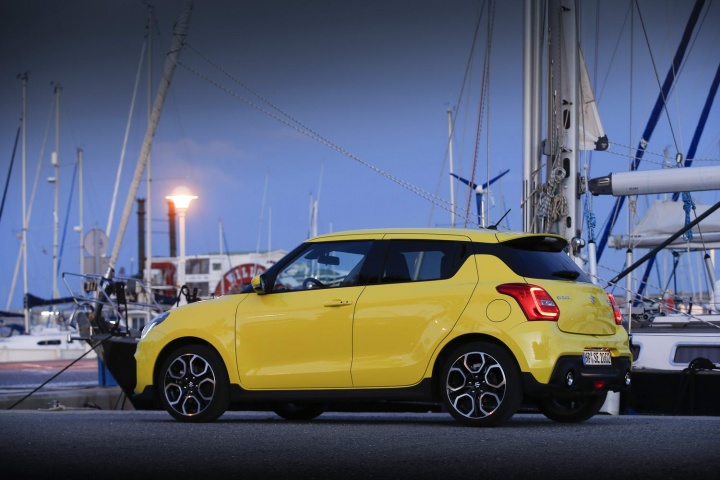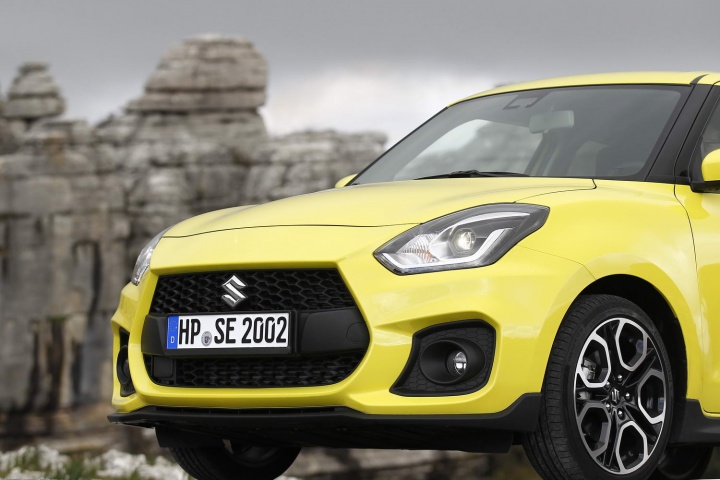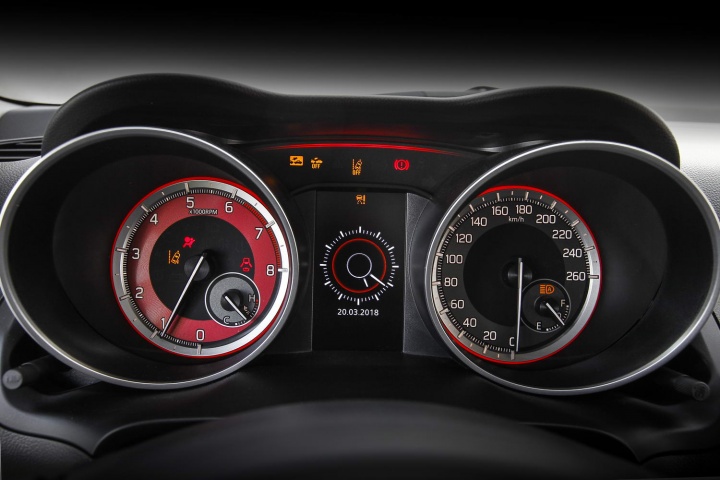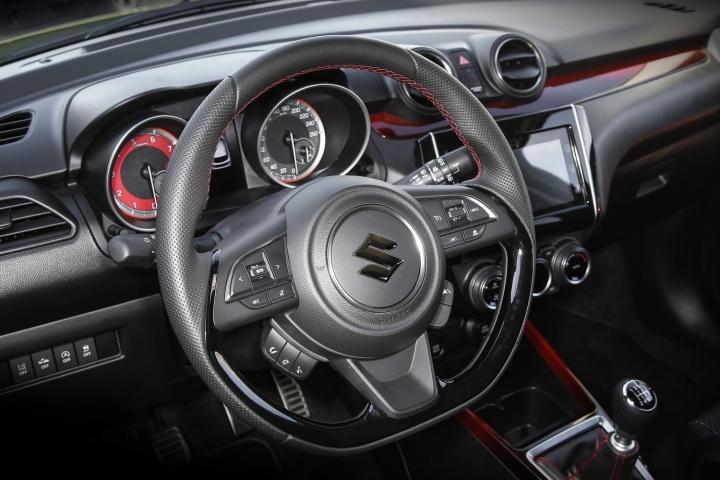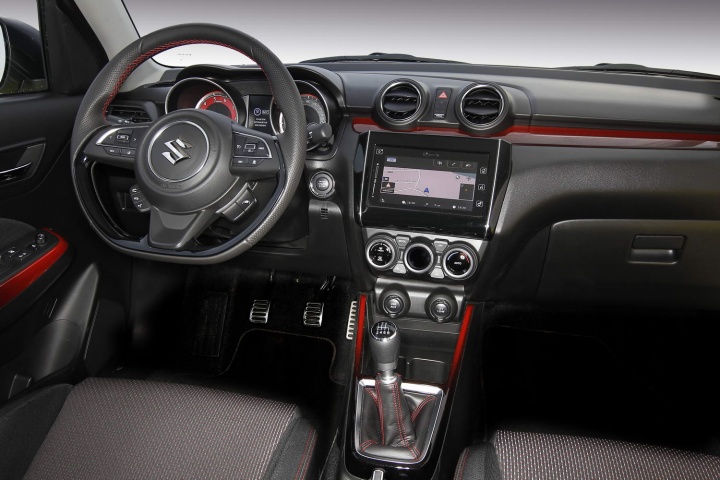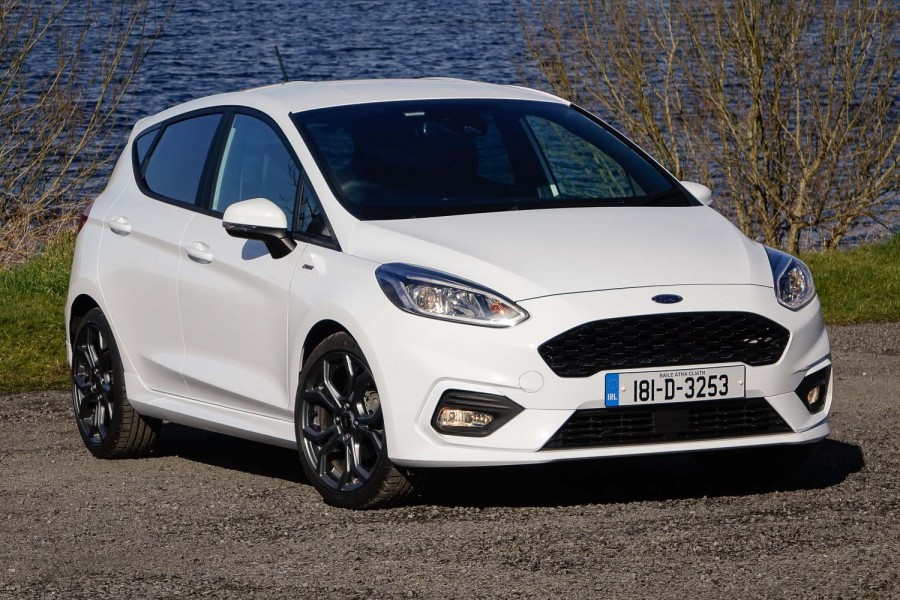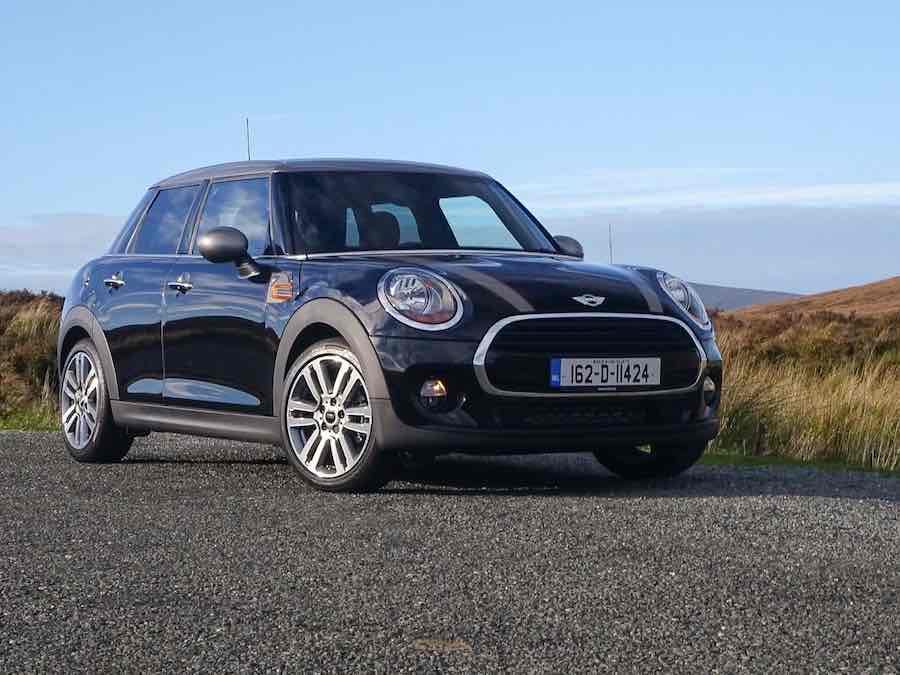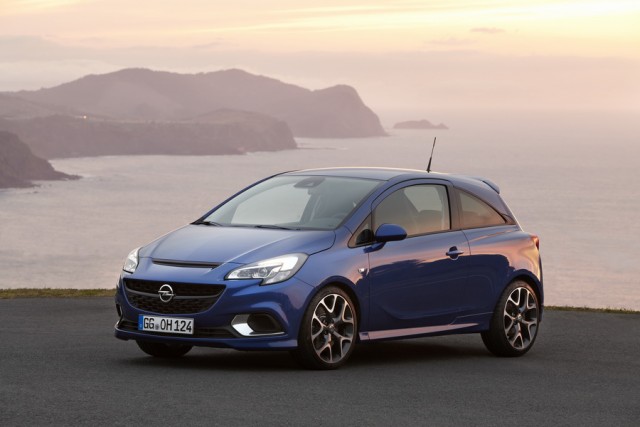Suzuki seems, on the face of it, to have done all the right things to the third iteration of its 'most exciting car', the Swift Sport. It has made the hatchback lighter. It has boosted its torque by a whopping 44 per cent. It has reduced its CO2 emissions and its fuel consumption markedly. It has made it faster, better-looking, better-equipped and more grown-up. So why have we got concerns about what has always been a darling of the motoring cognoscenti...?
In the metal
Compare a picture of the Sport model to a regular fourth-gen Suzuki Swift and you'll notice it looks quite different. It has a whole different arrangement for its 'face', for a start, courtesy of a wider, more aggressive and inverted grille, creases linking said item to the headlights (now all-LED) and more prominent fog lamps. Around the side, inflated wheel arches and more folds in the metalwork mean the car is actually 40mm wider than a standard Swift, while there are some side skirts and a set of lovely 17-inch alloys to drink in, albeit they're wheels that look suspiciously similar in design to those found on a Skoda Octavia vRS 245.
At the back, a tasteful spoiler extends the roofline and there's a diffuser arrangement down below, with spaced twin exhausts, which helps to accentuate the Sport's racy stance. However, we're not tremendously keen on the faux carbon fibre finish Suzuki has bestowed on the bar for the front number plate and that aforementioned diffuser, as it's a bit cheap and aftermarket-looking. Other than that, though, we think the Swift Sport looks fantastic; it's a really well-judged aesthetic piece of work, not too over-the-top, not too dull and capable of wearing bright colours. None being brighter than the yellow of the test cars - it's a fabulous shade for the Suzuki.
Inside, it's the same story as a regular Swift - as in, it's OK rather than excellent, with some dodgy materials used and a slightly dated feel to the layout, but it's spacious and well-equipped (more on this in a second) - only with the addition of red highlights on the doors, transmission tunnel, dashboard and dials in the cluster, while Sport-branded bucket seats and a flat-bottomed, thin-rimmed steering wheel are more items bespoke to the Swift range-topper. These few details are enough to improve the ambience somewhat, while the equipment (told you we'd come back to it) is generous: there are a load of driver assist systems, including lane keep assist and adaptive cruise control, plus luxuries like climate control, keyless entry and go, full satnav-toting infotainment and a reversing camera, among more.
Driving it
We'll start this with a summation of the dynamics: the Swift Sport has done what so many cars before it have, which is to become more rounded and grown-up, at the expense of some of its ultimate driving excitement. And that's a bit of a shame.
It's by no means all bad news, of course, but neither is it a universally glowing report for this newly turbocharged warm hatch. Suzuki's process of creating the third Swift Sport (we didn't have a Sport for the first generation of the Japanese hatchback, in case you're wondering about the discrepancy of the Mk3 Sport being based on the Mk4 Swift) is to take the 1.4-litre turbocharged engine out of the Vitara S and plonk it into the B-segment hatchback. The suspension is stiffened, the steering recalibrated and the rack hollowed out, the brakes are larger and given fade-resistant pads and the six-speed manual gearbox has a 10 per cent shorter throw than previously.
Built on the Heartect platform, which means Suzuki's cars can be very light, but also rigid in torsion, the Swift Sport clocks in at a remarkable 975kg; that's 70kg lighter than the old 1,045kg Sport Mk2. Power has marginally crept up by 4hp, from 136- to 140hp here (same as the Vitara S and, to be honest, a missed opportunity on Suzuki's part - it could have gone to 160- or 170hp to differentiate the Sport as a halo model for the entire brand), but the torque has almost rocketed through the roof. A whopping and additional 70Nm has been found, and that 230Nm is smeared across a 1,000rpm band that starts from as low as 2,500rpm, instead of the old car's 160Nm at a giddier 4,400rpm. On-paper performance hasn't leapt by as much as you might think, the turbocharged Sport trimming six-tenths from the 0-100km/h time with an 8.1-second sprint, while top speed has increased 15km/h to 210km/h flat out.
Don't let on-paper numbers fool you, though, as the new Swift Sport feels much more urgent than its normally-aspirated predecessors. That's because it flatters slightly lazier gear selection, as the torque will mask your errors and dig you out of low-revs performance holes that the old Sports simply would not. Indeed, so flexible is the Suzuki, and so long-legged is the gearbox, that you can pretty much use third gear for the entirety of a quick drive along a quiet, gnarled country road. This is good news on the one hand, as the manual hasn't the sweetest of throw in the world, but bad news in terms of the involvement the old Sports used to have, because you needed to be on your driving A-game to get the best from them. And more demanding cars are often the most rewarding.
The engine, too, has lost something when compared to the old 1.6-litre NA lumps. It's effortlessly muscular in the midrange on motorways, where the Sport's excellent ride quality and decently impressive noise suppression make it far more capable and comfortable than the old versions, but the engine doesn't ever sound very good and it won't rev much beyond peak power at a lowly 5,500rpm. That, again, saps some character from the Swift Sport. There's also a very odd grumbling noise from the gearbox when you lift off the throttle at middling engine speeds, so acoustically the Suzuki is no great shakes.
However, all the chassis goodness is still there and that turbo thump allows you to better access it on a give-and-take road. The Sport's lack of mass makes it terrific on turn-in, the front end only really washing wide with the most extreme and brutally ham-fisted of provocation. Brake late and dart for the apex, and (with the stability control switched off) you can feel the back of the car moving to adjust the Swift's line. The steering is light and lacking feedback, but it's consistent and accurate, and once you've turned the lane departure assist off you no longer feel like you're fighting with it. The pedals and the way the brakes bite make for perfect heel-and-toe downshifts, and in general you can still have a hoot driving the Swift Sport like you're a teenager again. It retains its fun factor.
Yet you can't help but think it doesn't retain quite enough of its fun factor, having sacrificed it on the altar of improved day-to-day civility. The Swift Sport Mk3 would be much easier to live with than either of the two models that have gone before it - but is it just a trifle duller as a result? Hard to say. And it's owners of old Swift Sports who are most likely to buy the new one, so we hope they're not disappointed when they test-drive the 1.4 turbo Suzuki.
What you get for your money
Although the exact price hasn't been confirmed for Ireland yet, there's actually a strong tie-up between Suzuki UK and our market. And, over the water, we know that the Sport is a four-figure hike on the current range-topper, the SZ5 (from €18,995). So, using that number as a basis, and having confirmation from Suzuki UK's chiefs that the same thing will happen here when the price is confirmed in early May, then the Sport is going to be in the €22,000 ballpark. And that makes it very, very expensive, for what is a warm hatch rather than a full-on supermini hot hatch. No longer is the Swift a conspicuous bargain.
Salving your troubled conscience, though, will be another detail we can extrapolate from the UK spec: the Swift Sport will have absolutely no cost options and every possible toy you could fit bolted onto it. Not even the various metallic paints, such as signature Champion Yellow, will add to its price. So while you can, say, spec a MINI Cooper 5-Door up to nearly 30 grand, you will know already exactly what the Suzuki will set you back financially. But Suzuki must be nervous, especially as rumours suggest the full-on, all-new Ford Fiesta ST will be not a great deal more than the price of the Swift...
Summary
We most certainly like the new Suzuki Swift Sport and more time behind the wheel on our own roads might convince us further of its merits. The new 1.4-litre engine is stronger than the old 1.6, the chassis is still marvellous for this class and there's an extra layer of polish to everything the Suzuki does that makes it a difficult car to ignore.
But some of the thrill factor has ebbed away, it doesn't sound great and we think it's priced a bit too robustly for a vehicle that isn't a proper, 200hp+ hot hatch. Where once it was almost a default go-to car, in the honesty of its old-school warm hatch offering, now it has crept too close to the turbocharged supermini elite, both in terms of its mannerisms and its pricing. Sub-€20k, with another 20hp and a noisier exhaust system, the Swift Sport would have been a four-star car without a shadow of a doubt - maybe even four-and-a-half. As it is, we think it's a tad overpriced and underpowered, making it a fringe player instead of a shining star. Pity.

